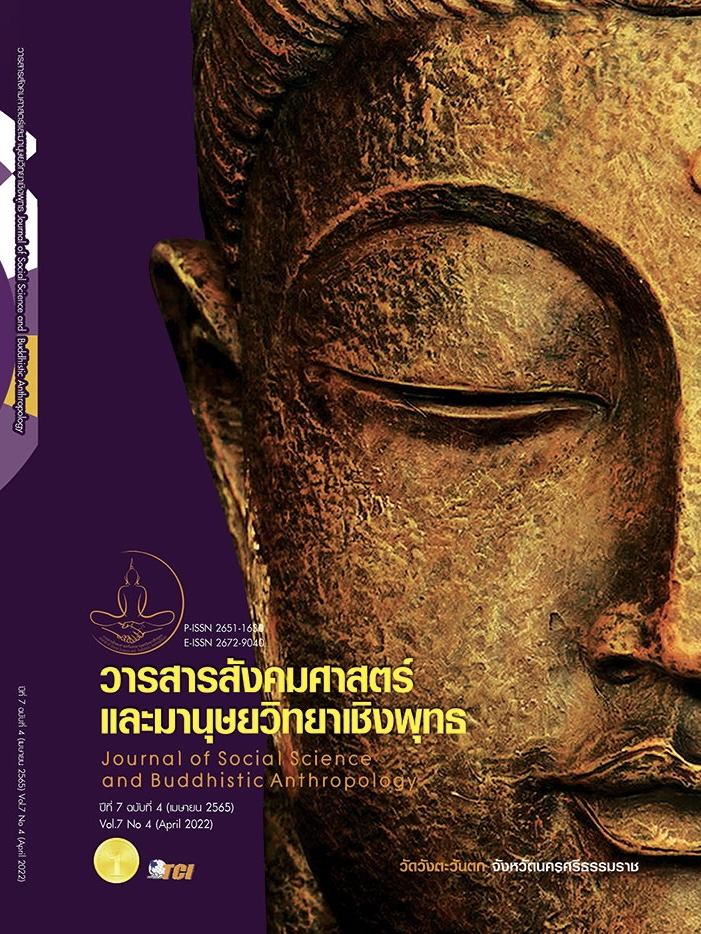DEVELOPMENT OF AN INSTRUCTIONAL MODEL BASED ON CONCEPTUAL CHANGE MODEL AND LESH’S TRANSLATION MODEL APPROACHES TO ENHANCE MATHEMATICAL CONCEPT OF LOWER SECONDARY SCHOOL STUDENTS
Keywords:
Conceptual Change Model Approach, Lesh’s Translation Model Approach, Mathematical ConceptAbstract
The objectives of this research article were to develop an instructional model based on the conceptual change model and Lech's translation model approaches to enhance the mathematical concept of lower secondary school students. Students had a conceptual idea about the content of mathematics, which was the true understanding to enable teachers to teach mathematics effectively. The research process consisted of 2 phases: 1) Assessing preliminary data to develop the instructional model; 2) Constructing and evaluating the instructional model (R1), including instructional model, manuals for instructional model use, and learning management plan. This research was a research and development. The sample included 5experts in curriculum and evaluation for investigating content validity and appropriateness of tools. Research instruments were the consistency index of instructional model appropriateness and related literature. Data were analyzed by using mean and standard deviations. The results were as follows. The process of the instructional model consisted of 5 stages: 1) Arousing suspicion; 2) Planning for conceptualization; 3) Using various representations for conceptualization; 4) Summarizing the meaning of a new concept, and 5) Implementation. The instructional model was appropriate at the highest level ( = 4.66, S.D. = 0.51). It is suggested that individuals interested in the instructional model should study its manual thoroughly to achieve the objectives of the model.
References
ชยานันต์ จิรสินกุลโรจน์. (2559). การพัฒนากิจกรรมการเรียนรู้คณิตศาสตร์โดยใช้โมเดลการแปลงของเลชด้วยตัวต่อเลโก้ (LEGO®) เพื่อเสริมสร้างมโนทัศน์และความคงทุนในการเรียนรู้ เรื่อง เศษส่วน ชั้นประถมศึกษาปีที่ 4. ใน วิทยานิพนธ์การศึกษามหาบัณฑิต สาขาวิชาวิทยาศาสตร์การศึกษา. มหาวิทยาลัยนเรศวร.
บุญชม ศรีสะอาด. (2560). การวิจัยเบื้องต้น. กรุงเทพมหานคร: สุวีริยาสาส์น.
พวงรัตน์ ทวีรัตน์. (2540). วิธีการวิจัยทางพฤติกรรมศาสตร์และสังคมศาสตร์. กรุงเทพมหานคร: สำนักทดสอบทางการศึกษาและจิตวิทยา มหาวิทยาลัยศรีนครินทรวิโรฒ ประสานมิตร.
สถาบันทดสอบทางการศึกษาแห่งชาติ. (2560). ผลการทดสอบทางการศึกษาระดับชาติขั้นพื้นฐาน (O-NET)ชั้นมัธยมศึกษาปีที่ 3 ปีการศึกษา 2560. เรียกใช้เมื่อ 12 ตุลาคม 2561 จาก http://www.niets.or.th.pdf
สำนักงานคณะกรรมการการศึกษาขั้นพื้นฐาน. (2560). มาตรฐานการเรียนรู้และตัวชี้วัด กลุ่มสาระการเรียนรู้คณิตศาสตร์ วิทยาศาสตร์ และสาระภูมิศาสตร์ ในกลุ่มสาระการเรียนรู้สังคมศึกษา ศาสนา และวัฒนธรรม (ฉบับปรับปรุง พ.ศ. 2560) ตามหลักสูตรแกนกลางการศึกษาขั้นพื้นฐานพุทธศักราช 2551. กรุงเทพมหานคร: โรงพิมพ์ชุมนุมสหกรณ์การเกษตรแห่งประเทศไทย จำกัด.
สิริพร ทิพย์คง. (2558). มโนทัศน์ที่คลาดเคลื่อน ความรู้คณิตศาสตร์ที่ถูกต้อง. กรุงเทพมหานคร: สถาบันพัฒนาคุณภาพวิชาการ (พว.).
อัมพร ม้าคนอง. (2553). ทักษะและกระบวนการทางคณิตศาสตร์: การพัฒนาเพื่อพัฒนาการ. กรุงเทพมหานคร: โรงพิมพ์แห่งจุฬาลงกรณ์มหาวิทยาลัย.
อัมพร ม้าคนอง. (2558). คณิตศาสตร์สำหรับครูมัธยม. กรุงเทพมหานคร: โรงพิมพ์แห่งจุฬาลงกรณ์มหาวิทยาลัย.
Aprea, C. (2015). Secondary school students’ informal conceptions of complex economic phenomena. International Journal of Educational Research, 69(2015), 12-22.
Duit, R. & Treagust, D. F. (2003). Conceptual change: a powerful framework for improving science teaching and learning. International Journal of Science Education, 25(6), 671 - 688.
Gooding, J. & Metz, B. (2011). From misconceptions to conceptual change: Tips for identifying and overcoming students’ misconceptions. The Science Teacher, 78(4), 34-37.
Hallett, D. H. (2001). Achieving numeracy: The challenge of implementation. In L.A. Steen. (Ed.), Mathematics and Democracy: The case for Quantitative Literacy (pp. 93-98). Princeton NJ: National Council of Education and the Disciplines.
Lesh, R. (2000). Conceptual and procedural understanding in middle school Mathematic Mathematics in middle school. Reston: NCTM.
Park, M. S. (2013). Professional Development and Teacher Change: Teachers’ Practices and Beliefs about Using Multiple Representations in Teaching Mathematics. Retrieved December 20, 2014, from http://conservancy.umn.edu/bitstream /handle/11299/159129/Park_umn_0130E_14076.pdf?sequence=1
Posner et al. (1982). Accommodation of a scientific conception: Toward a theory conceptual change. Science Education, 66(2), 211-227.
Stofflett, R. T. (1994). The accommodation of science pedagogical knowledge: The application of conceptual change constructs to teacher education. Journal of Research in Science Teaching, 31(8), 787-810.
Wade, R. C. (2012). Conceptual change in elementary social studies: A case study of fourth graders' understanding of human rights. Theory and Research in Social Education, 22(1), 74-95.
Downloads
Published
How to Cite
Issue
Section
License
Copyright (c) 2022 Journal of Social Science and Buddhistic Anthropology

This work is licensed under a Creative Commons Attribution-NonCommercial-NoDerivatives 4.0 International License.








